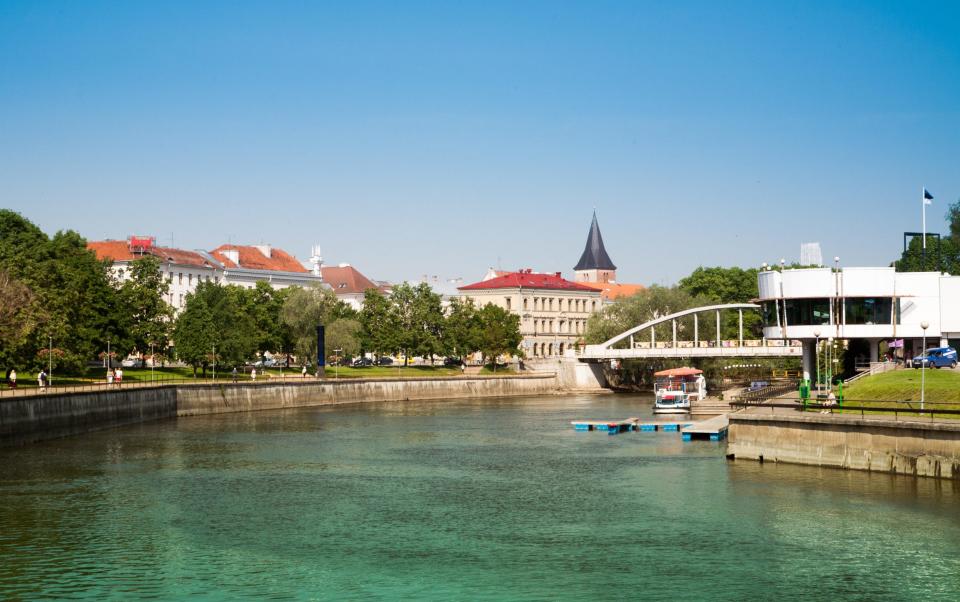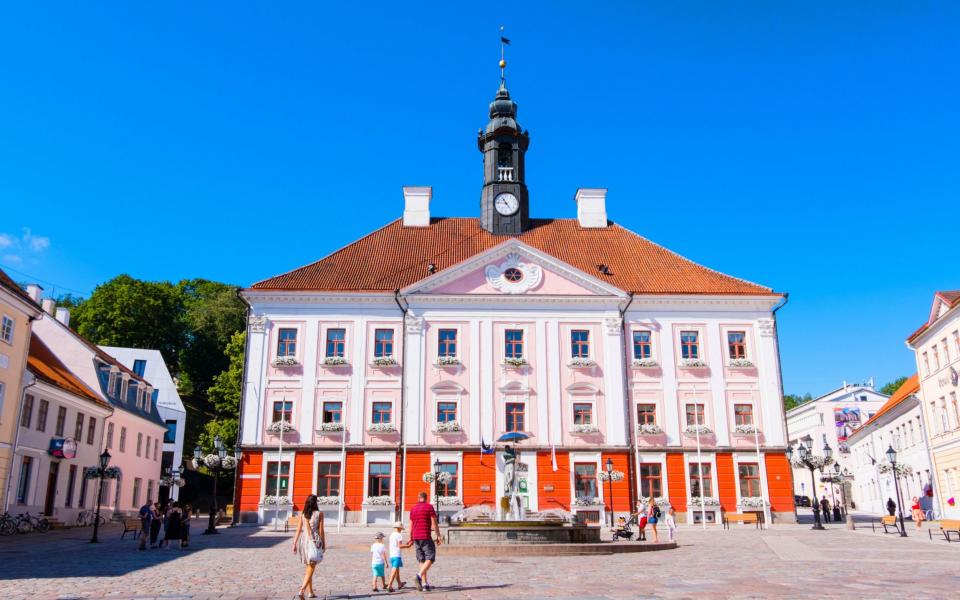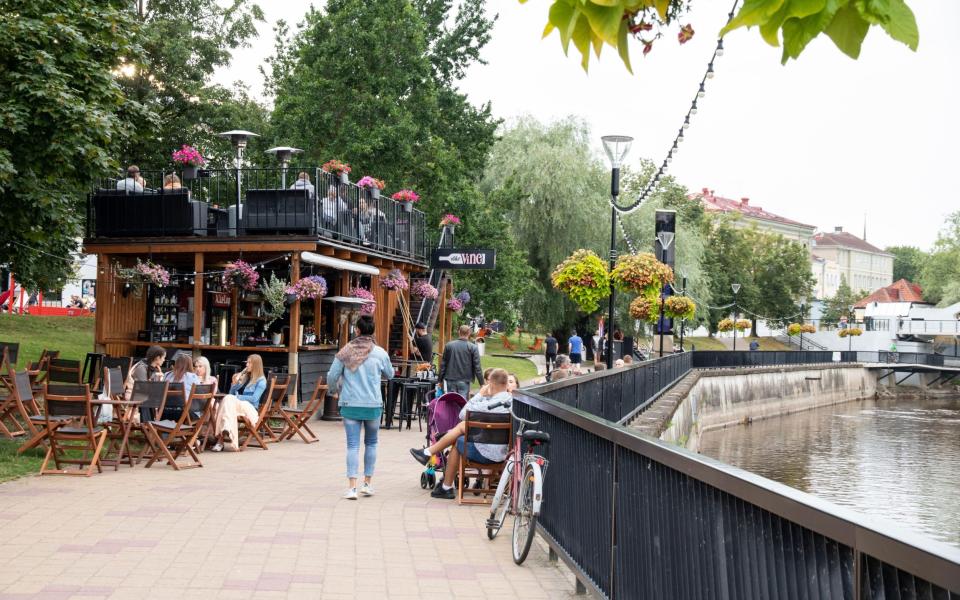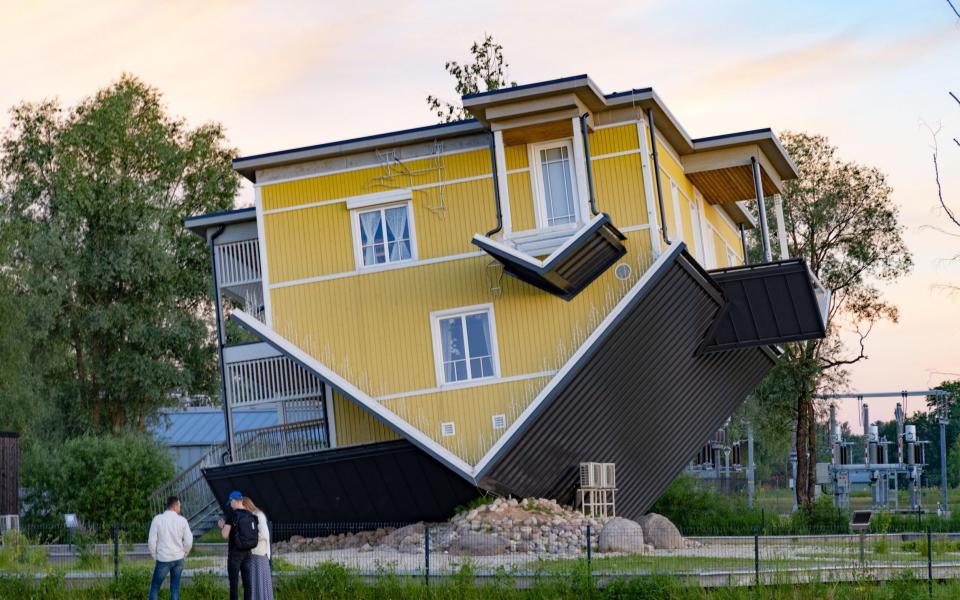As we drove from Tallinn into the wild Estonian countryside, through snowy fields and thick dark forests, I remembered why I loved coming here, to this untamed country where the past felt so close.
Estonia is just a short flight away from London, and its dynamic capital, Tallinn, has all the mod cons you’d expect to find in any major European city. However, to enter another world, it is enough to get away from the city for a short time. In these vast forests there are wolves and bears, deer and wild boars, and the landscape is full of desolate ruins of collective farms; This is a reminder that Estonia was part of the USSR until 1991. Despite the dramatic transformation since independence (it is now a member of NATO, the EU and the Eurozone), traveling here still feels quite daring, and while the roads are good, the two-hour drive from Tallinn to Tartu is an adventure in itself.
Tartu is Estonia’s second largest city, with a rich heritage and proud history, but it has never been an obvious holiday destination for Britons. It’s just over 160 kilometers from Tallinn, just 55 kilometers from the Russian border, and Putin’s invasion of Ukraine hasn’t helped the tourist trade much. However, this year Tartu, the European Capital of Culture (www.tartu2024.ee) and judging by the experience of previous host cities, the year-round season of artistic events will attract large numbers of foreign audiences. So what will you find if you decide to come here? So is it worth the walk?


Tartu is famous in Eastern Europe for its old and famous university. Founded in 1632, its history reflects Estonia’s own history. Founded by Swedish invaders and then revitalized by Russian colonists, it became a bastion of Estonia’s new-found, hard-won independence after World War I – but was eventually swallowed up by the Soviets (along with the rest of Estonia). of the Second World War. When the Soviet Union collapsed in 1991, it became Estonia again and attracted students from all over Europe. Today it is considered the leading university in the Baltic States.
Tartu’s academic status gives it a size that is not at all compatible with its compact size. Neoclassical university buildings dominate the city centre, and its large student population (about 15,000 out of a general population of 100,000) gives the city a lively, youthful atmosphere. The most atmospheric student bar is Püssirohu (www.pyss.ee), housed in a cavernous old armory with bench seats, trestle tables and a range of delicious local beers. If you prefer somewhere a little friendlier, Werner (www.werner.ee) is an elegant, old-school cafe serving aromatic coffee and tempting cream cakes.


The ancient city center is fascinating but doesn’t have much of a feature. If you’re here for a few days, you’ll want to go a little further afield. The rest of the city isn’t that pretty, but even the dreariest parts are interesting; Tartu’s jumble of architectural styles from long periods of foreign occupation and brief periods of independence. There are many traditional wooden houses from the Tsarist period; Some of these are dilapidated, while others have been lovingly restored.
Many of the Soviet buildings are quite gloomy but still intriguing. The most interesting (and saddening) place is the KGB Museum (www.muuseum.tartu.ee), located in the basement of the ‘Grey House’ (as the locals euphemistically call it) where many Estonian victims of the Soviet regime were murdered. He was interrogated and tortured.
It’s not all doom and gloom. Tartu is a lively little city full of busy shops and cafes. It’s hard to believe that just 30 years ago all private enterprise was prohibited. Looking in the shop windows in the city center is as if the Soviet occupation never happened. There are so many good places to eat and drink.
Estonia has always been one of my favorite destinations, and now we are in a new Cold War with a new Iron Curtain along Estonia’s eastern border; I enjoy coming here even more. It’s sad to see how much Tartu lost during the Soviet era, but inspiring to witness how much has been regained since independence. Europe’s last cultural capital is a city on the rise and I think this year is the best year to visit.


The coolest corner
The coolest place to hang out in Tartu is a former factory called Aparaaditehas (www.aparaaditehas.ee), which is now home to a number of trendy bars, boutiques and restaurants. Stop by Typa (www.typa.ee), a former printing business now turned into a quaint workshop and museum (I had great fun printing my own postcards and even making my own paper).
Refuel at Resto Aparaat (www.aparaadiresto.ee) with its nourishing soups and draft beer – A. Le Coq (www.alecoq.ee) is the local brew. Next door is Fahrenheit 451, a charming second-hand bookstore named after Ray Bradbury’s dystopian novel about the burning of government books. In a place where many books were banned until recently, it still feels like a privilege to read anything you want; a privilege that we in the West take for granted.
children’s corner
If you’re coming here with teenagers or just a young soul, don’t miss Tartu’s magical Toy Museum (www.mm.ee). Housed in an old, brightly painted wooden house like a forest hideaway in a Grimm’s fairy tale, this is a fascinating collection, a window into a lost world.
A must see sight
Located in lush parkland on the edge of the city (a military base during the Cold War), the Estonian National Museum (www.erm.ee) is a dramatic time warp through the turbulent story of Estonia, from prehistory to independence. The airy, futuristic building is an attraction in itself.
signature dish
Classic Estonian food is healthy and hearty rather than haute cuisine, and the best place to shop for local produce such as bread and cheese, fruit and vegetables, jams and mustard is the beautiful Art Deco Market Hall (www.visitestonia.com). Look at the photos of old Tartu on the walls.


biggest export
Kalev (www.kalev.eu) is recognized in the Baltic States as Estonia’s best chocolatier. There are two factory outlets in Tartu where you can buy chocolate at cheap prices, one is just opposite the Market Hall.
fun fact
The University of Tartu (www.ut.ee) had its own prison where disobedient students were often imprisoned for several weeks. Unfortunately, this beautiful tradition ended more than a century ago, but you can still visit the attic cells decorated with the old graffiti of these rebellious undergraduates.
get there
Fly direct to Tallinn for as little as £32 with Air Baltic (www.airbaltic.com), Ryanair (www.ryanair) or Wizz Air (www.wizzair.com). Tartu can be reached by road or rail.
Where to stay
Stay at Holm (www.holmrestoran.ee), a stylish spa and one of Tartu’s best restaurants in the heart of the old town, and Hotell Lydia (www.lydia.ee), a stylish and modern hotel; Buckwheat blinis are delicious. Double stays start from €115 per night, including breakfast.
William Cook traveled to Tartu as a guest of Baltic Holidays (www.balticolidays.com), a British-based travel company with a passion for the Baltic States. Personalized tours with friendly local guides take you off the beaten path and reveal sights that most tourists miss.